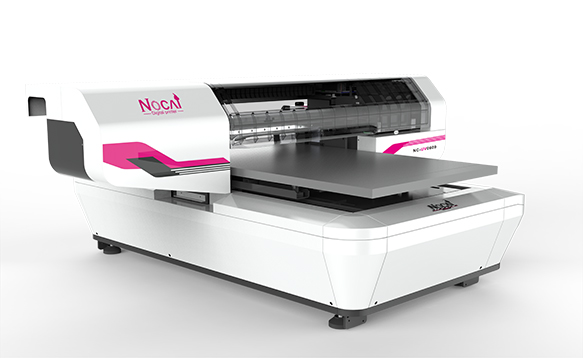
how does uv printing work
- By:nocai uv printer
- 2022-12-02
- 990
UV printing, short for ultraviolet printing, is a popular printing process that utilizes UV light to cure the ink onto a wide range of substrates. This printing method is highly suitable for printing on a diverse range of materials, including paper, plastic, and metal. In this article, we will delve into the workings of UV printing and explain its advantages, disadvantages, and applications.

How Does UV Printing Work?
UV printing involves using a UV lamp to cure the ink onto the desired substrate. The process begins with the application of an inkjet-printed layer of ink onto the material. This ink is then cured using a high-intensity UV light source, which causes the ink to harden and adhere to the substrate. The result is a durable and scratch-resistant printed image.
Advantages of UV Printing
Fast Curing: UV ink dries and cures extremely quickly, making it an efficient printing method for high-volume production.
Durable: UV-cured ink provides a strong and durable finish, making it suitable for applications that require outdoor durability or frequent handling.
Versatile substrates: UV printing can be used on a wide range of materials, including paper, plastic, glass, and metal.
High-quality prints: UV printing offers excellent color vibrancy and resolution, making it an excellent choice for printing graphics and logos.
Environmentally friendly: UV ink is non-toxic and typically more environmentally friendly than traditional inks.
Disadvantages of UV Printing
Cost: UV printing machines and ink can be more expensive than other printing methods.
Limited color options: Although UV ink offers good color vibrancy, the color gamut is typically smaller than some other printing methods.
Handling: UV ink can be sensitive to touch immediately after curing, so extra care is required during handling.
Applications of UV Printing
Packaging and labeling: UV printing is commonly used for printing on packaging and labels due to its durability and scratch resistance.
Textiles: UV printing can be used to print on fabrics and clothing, providing a durable and washable finish.
Signage: UV printing is a popular choice for printing outdoor signage due to its durability and resistance to weathering.
Decorative items: UV printing can be used to print on glass, plastic, and metal items for decorative purposes.
In conclusion, UV printing is a versatile and efficient printing method that offers high-quality prints on a wide range of substrates. Its fast curing time, durability, and adaptability to different materials make it a popular choice for various applications, including packaging, textiles, signage, and decorative items.

